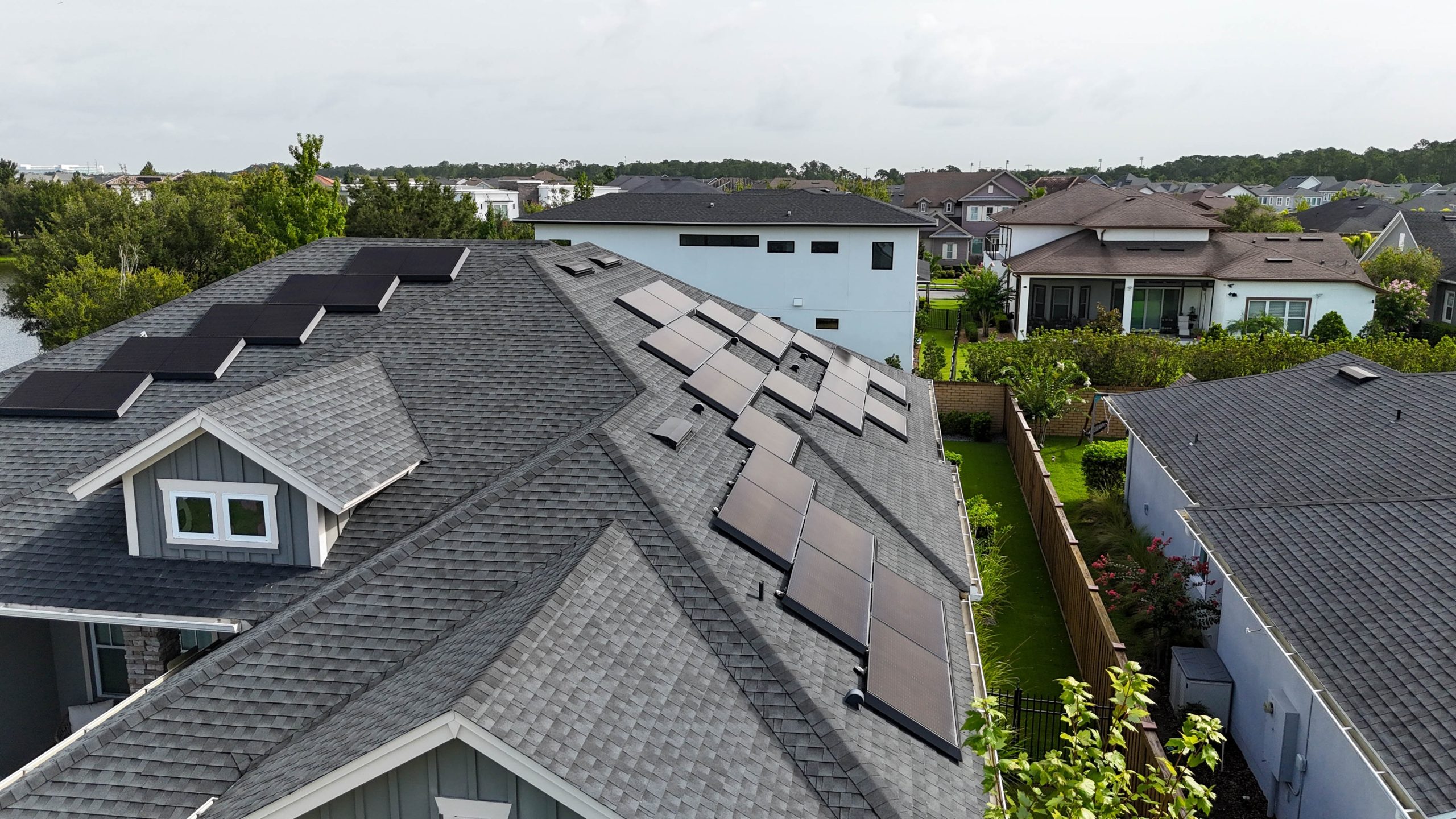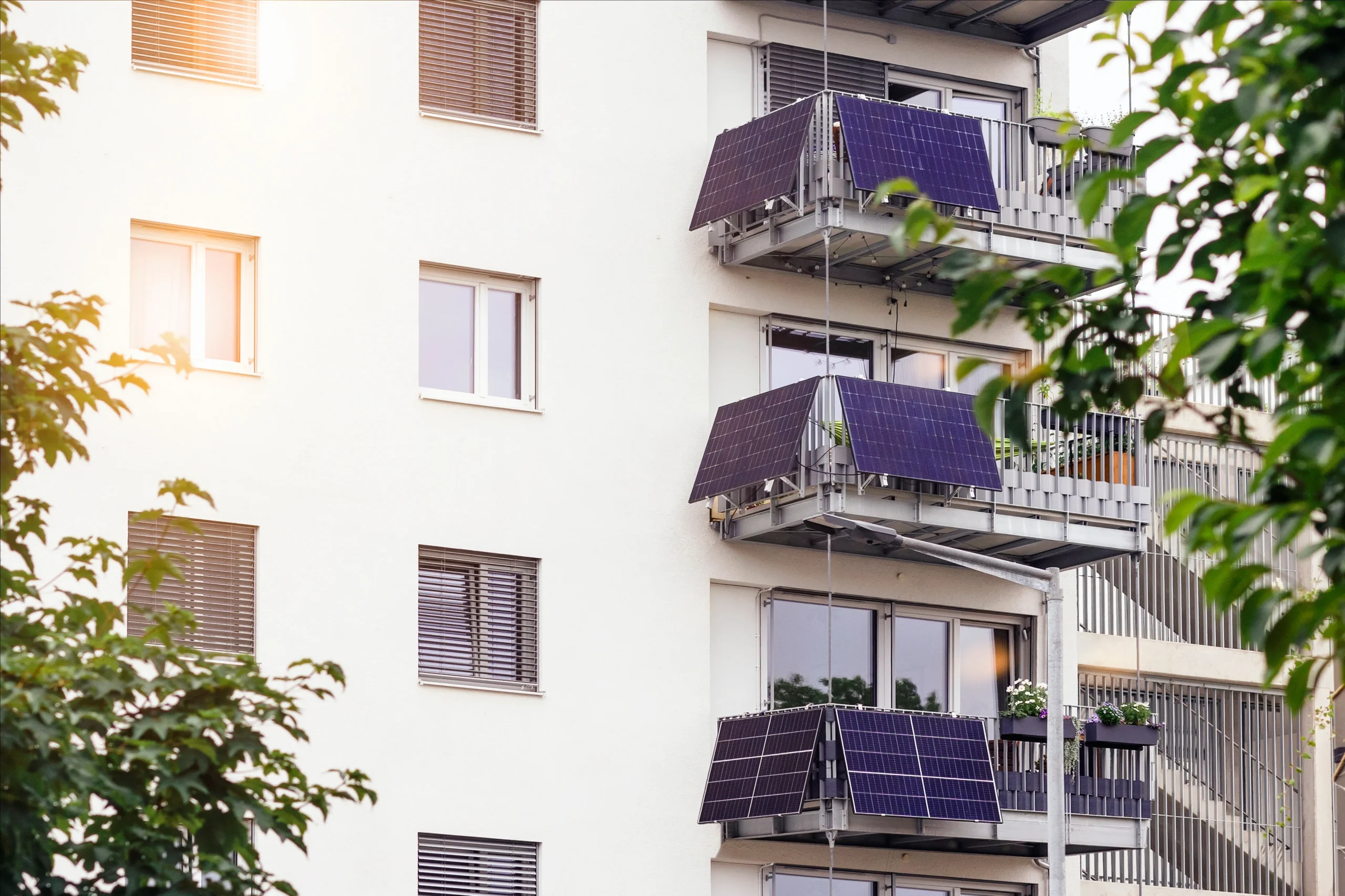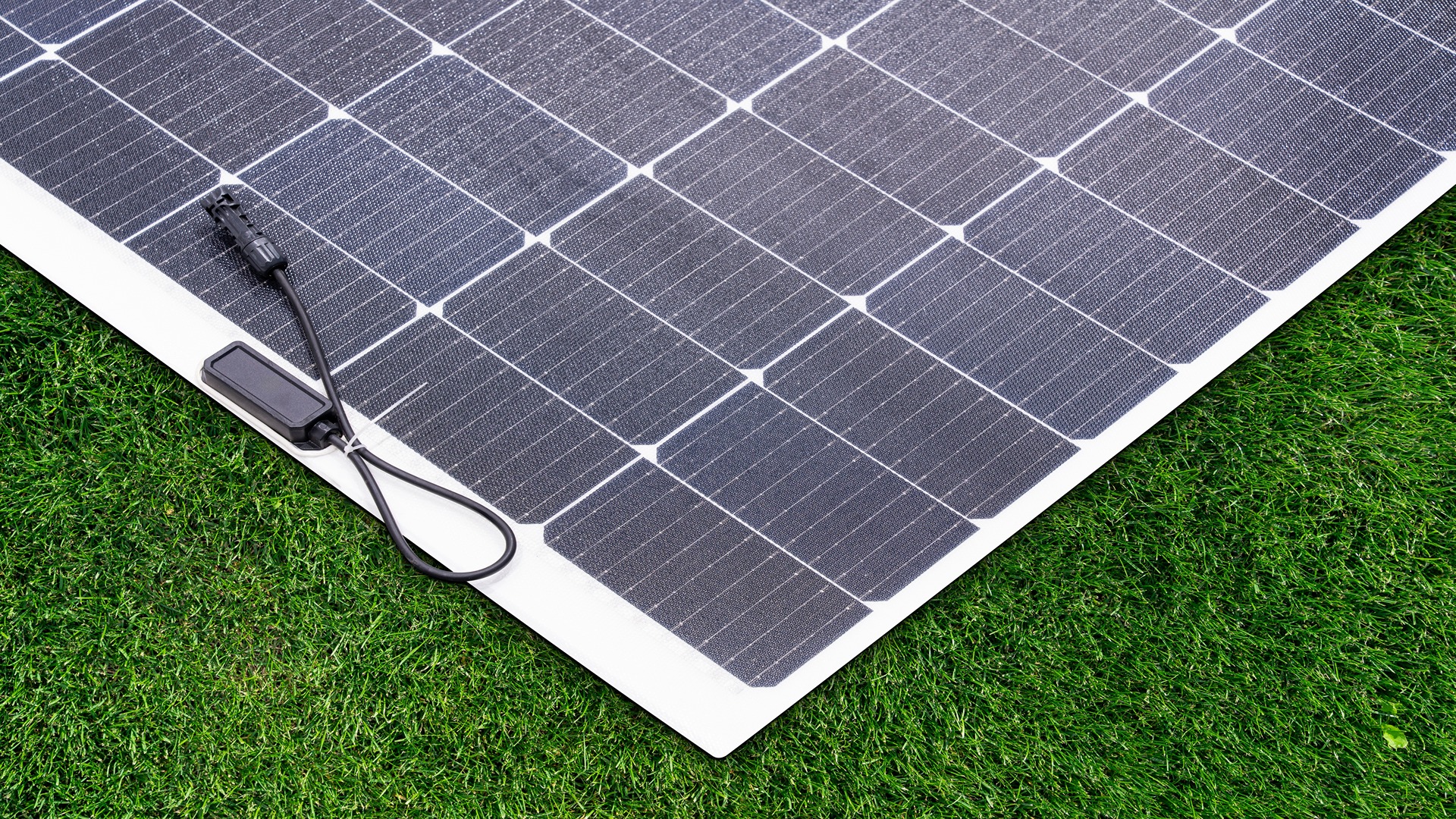Do Solar Panels Work in the Shade?
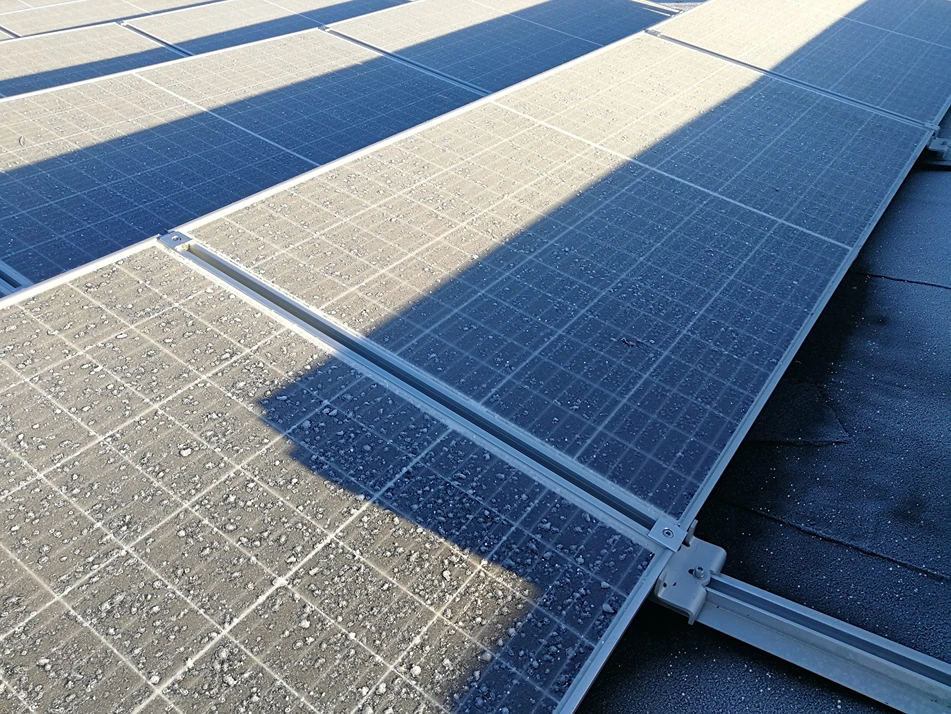
It’s no secret that solar panels operate from direct sunlight. However, disappointment befalls the solar system owners when they learn how detrimentally the shadow affects the performance of the entire panel.
It may reduce the panel’s return on investment, and solving the problem itself will require a lot of money. So, how does shade affect your solar panels? Let’s find out.
How Does Shading Affect Solar Panels?
Your solar panels consist of photovoltaic cells (solar cells) combined into one module. Each solar cell functions by converting sunlight into electrical current. If all photocells receive equal light, the panel operates at maximum efficiency.
But sooner or later the panel may be covered by shadow, and shading can greatly impact the productivity of your solar panels.
So, what is solar shading? It’s basically when the units are getting no direct sunlight. It creates a large difference in light intensity within a single panel. And since the modules operate sequentially, it reduces the performance of the entire system.
Even a small shadow from a tree branch can reduce the efficiency of your solar panels by several percent. In some cases, when completely shaded, the panel may stop generating energy altogether.
Types of Shading in Solar Panels and Their Sources
If your panels are completely shaded, it greatly reduces the performance of the batteries or eliminates it. Here are the types of shading that also affect panels:
- Partial static shading: If only part of the unit is in the shade, it will significantly reduce solar panel efficiency because the solar cells are connected in series, and dimming one cell can reduce the efficiency of the entire panel
- Dynamic solar cell shading: It is a type of shadow that changes its position, it can be a shade from a cloud or a building, which changes with the position of the sun.
There can also be many sources of it, such as trees. Unfortunately, your home may be surrounded by tall trees, leaving solar panels in shade. They are, though, not the only challenge for solar panels:
| Self-shadowing | Besides trees, other panels can cast shadows on your solar panels. Depending on the installation, adjacent modules may cast shadows on lower elements in the same system, shading themselves. |
| Your roof | Solar panels in shade are darkened because of the same roof they are on. Depending on the position of the sun and the time of day, different parts of the roof (a chimney, for example) may block the sun’s rays on part of the panels. |
| Clouds | Even though they block the sun and create shadows, there is no need to worry about running your solar power plant on cloudy days. Clouds allow some sunlight to pass through, so the panels still work in such weather but with a certain reduction in efficiency. |
Effect of Shading on Solar Panels
When solar panels are in shade, their efficiency drops very quickly. If one or more of these photocells ends up in the shadow, differences are created in the amount of light each photocell receives. It can lead to consequences:
- Photovoltaic cells in the shade produce less energy compared to those in the sun.
- Even if a small part of the solar panel in shade, it will significantly reduce overall performance. For example, if one cell is shaded, the productivity of the entire panel can be reduced by 40%. If two-thirds of the panel is shaded, solar panel efficiency can be reduced by up to 70%.
- Your solar panels can become hot when one part of them is in the hot sun and the other part is in the shade. So-called “hot spots” occur when shaded cells act as resistance, causing them to heat up, causing temperature solar panel differences. It can severely damage your solar cells.
Solar Panel Shading Solutions Technologies
PV units have been around for quite some time, and today’s technologies are working to find solar panel shading solutions:
1. Bypass diodes
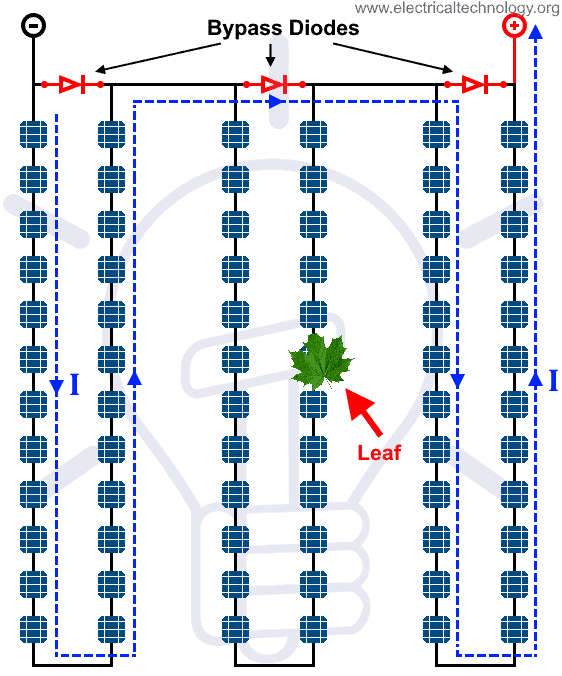
When parts of the solar panels are in shade, the bypass diode allows electrical current to bypass the solar panels in shaded areas, reducing energy loss along with the risk of overheating.
Bypass diodes are connected in parallel with groups of solar cells inside the panel. If one of the groups is shaded, the bypass diode closes and allows the current to bypass that group, maintaining overall solar panel efficiency.
2. Microinverters
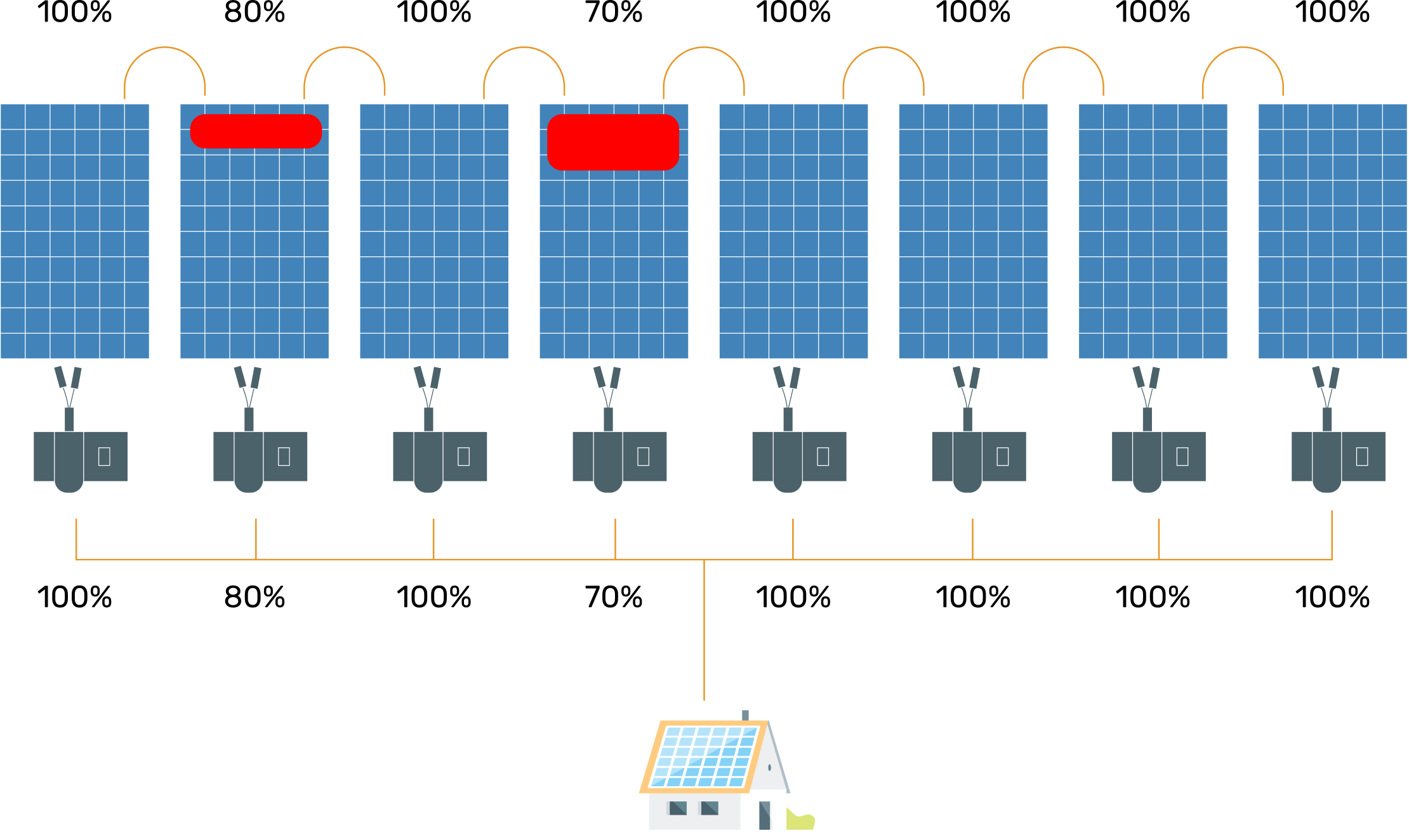
Microinverters are installed individually on solar panels in shaded areas and convert the direct current produced by the module into alternating current.
They allow each PV module to operate independently of the others. In that way, solar cell shading does not affect the operation of the other modules in the system.
3. Power Optimizers
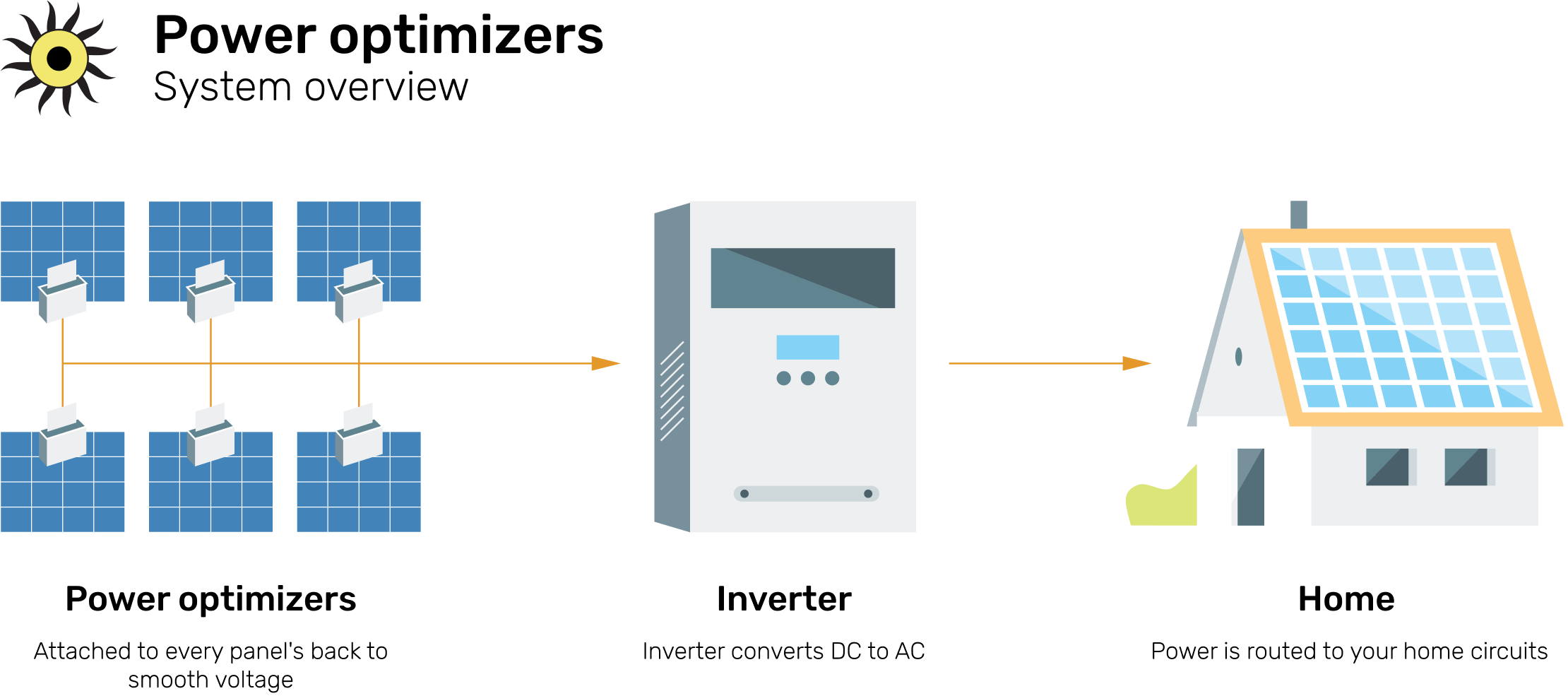
4. Sunlight Tracking Systems
Sunlight tracking systems (tracking systems) automatically adjust the angle of solar panels in shade throughout the day by following the movement of the sun.
That is, today’s technologies are focused precisely on reducing the influence of solar panels for shaded areas. These solutions to problems save the day, but they require more time and money to install.
Best Practices for Installing Units to Avoid Solar Cell Shading
How can you get fewer solar panel sunshades by installing your units? We have a couple of tips hidden:
- Choosing the right place: Install panels away from trees, buildings, and other tall objects that may create shadows. Also, be sure to pay attention to how the sun moves throughout the day and exactly how it illuminates your roof.
- Angle and orientation: Here’s why solar panels should face south – this way, they receive the maximum amount of sunlight. The angle of the modules should be approximately equal to the latitude of your location (for example, you should tilt the panel 41-42 degrees if you are in Chicago). This allows for optimal capture of the sun’s rays all year round.
- Placing panels on the roof: Ensure the modules do not shade each other. Leave enough space between rows of panels so that they do not cast a shadow on adjacent rows.
- Installation on the ground: If you decide that your solar panels shade roof is not suitable and the best choice is to install the system on the ground, then choose open areas. It may be difficult, but it is best to choose a location where there are no trees, buildings, or other objects that create shade.
Looking for the best solar panel system to meet your needs? Get your free solar quote right away!
Maintenance Tips for Solar Panels in Shade
If your solar panels are installed in shady areas and it is unavoidable, it is important to maintain and check the modules to ensure they continue to be efficient. Here are some tips on how to care for solar panels in shade:
- Batteries should be regularly cleaned to remove dirt, dust, and debris, as they can further reduce performance.
- Do not use aggressive detergents, which may damage your solar panels’ coating.
- If trees or shrubs grow near the units, trim their crowns so that they do not block your solar panels
Don’t forget that your modules need regular maintenance: checking for cracks and dirt, and checking fasteners.
Solar Panels in the Shade: Examples
There are also plenty of real-world examples of how you can reduce the effects of shadows on your solar panels. Today, we will look at two:
1. The installation of solar panels on a residential building with shading.
The case works with solar optimizers installed at the module level.
The use of solar optimizers in this case study resulted in a 5% increase in total energy production compared to a traditional central inverter system without optimizers.
2. It is essential not only to optimize the performance of your solar panels when they are already installed but also to do solar panel shading analysis in advance so that in the future the units will work at 100%.
So, Do Solar Panels Work in the Shade?
Your module must be exposed to the sun most of the time. Constant shadow is bad for its performance, and severe overheating of solar panels in shade (even with dimming) can only cause more damage. Therefore, take care of your solar panels and their proper placement to reap maximum benefits.
Looking for the best solar panel system to meet your needs? Get your free solar quote right away!

